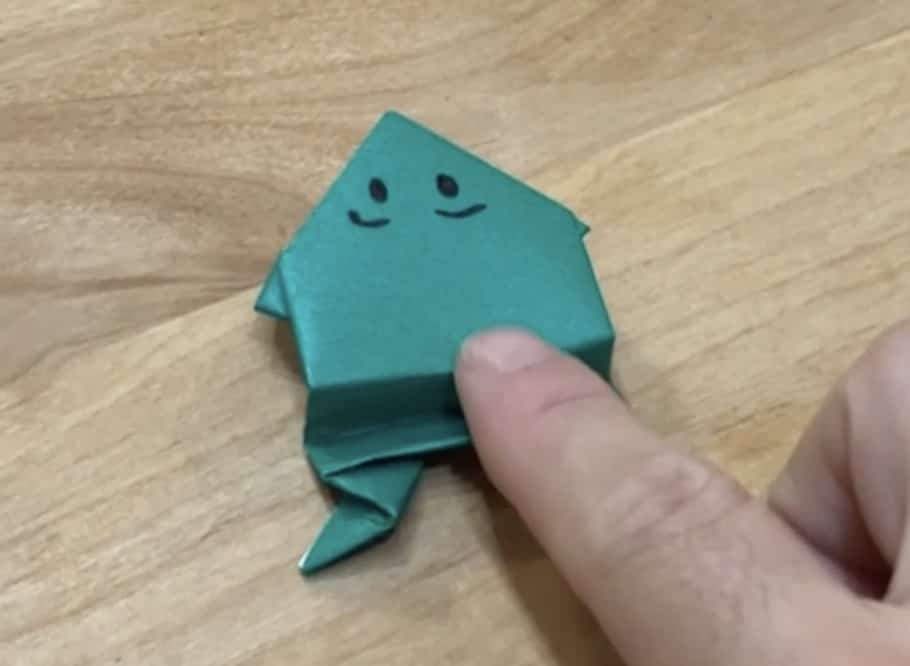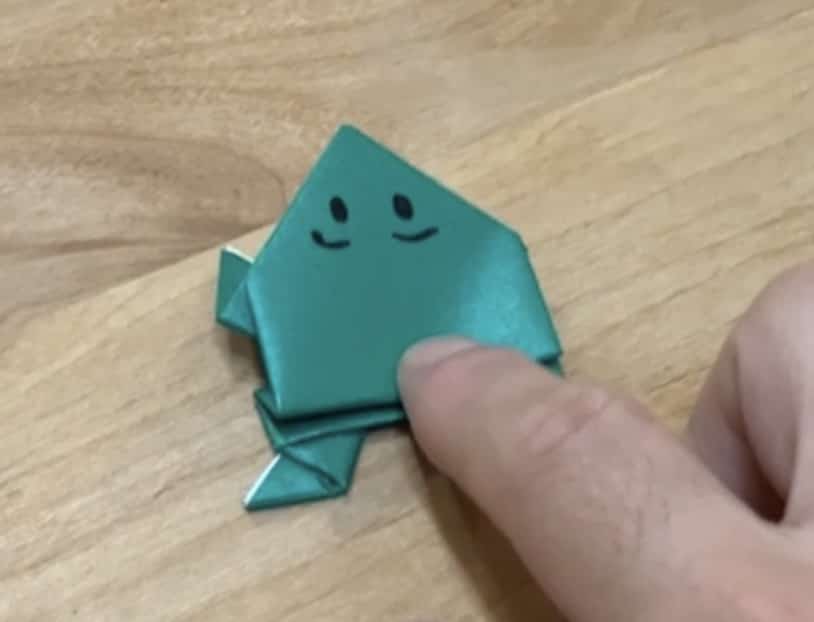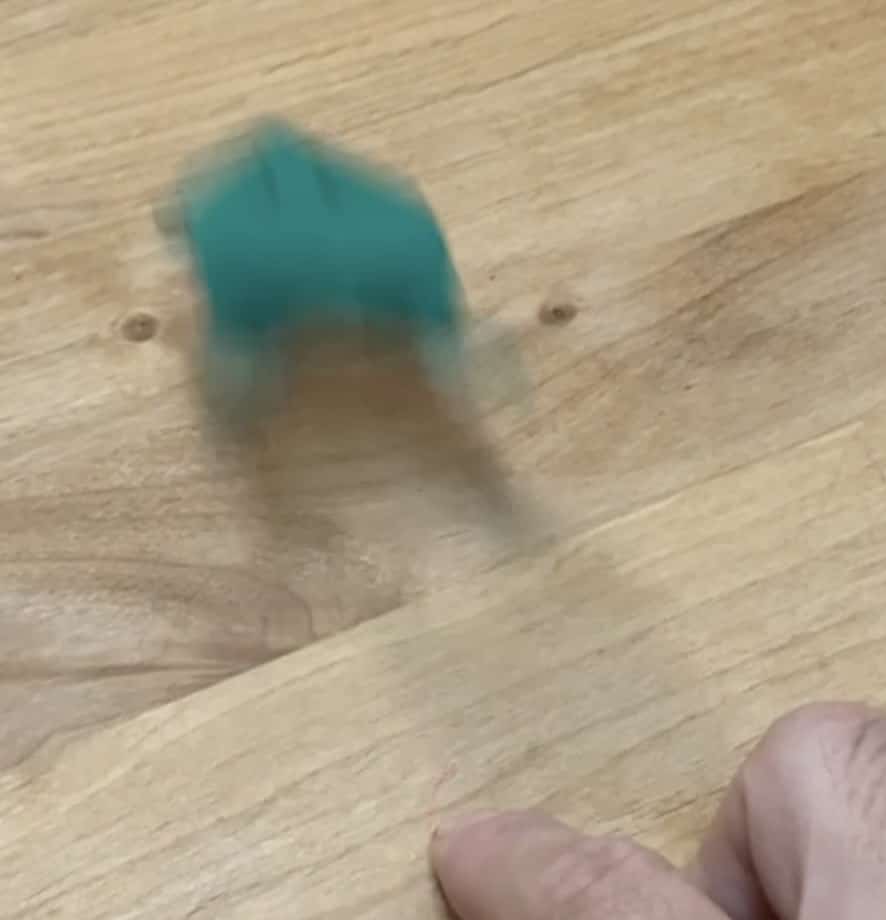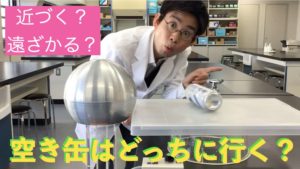An Origami Frog as a Physics Lesson!? The Hidden Secret of Energy Conversion Behind Its ‘Boing!’
Ken Kuwako, Science Trainer. Every Day is an Experiment!
A single sheet of paper suddenly “boings!” into the air, as if it has a life of its own. It’s the “Origami Frog,” a paper toy almost everyone has made at least once as a child. I recently made one again, this time with my own kids.

While the folding process is surprisingly simple, don’t underestimate its cleverness. This website provides detailed instructions. The crucial part is the final step: folding the “bottom” section tightly to create the “spring.” This is the single biggest factor that determines how high your frog will jump.
My child’s small fingers struggled to apply enough force, leading to a frustrated cry of, “It won’t jump well!” I had to help out a little, pressing firmly on the creases to maximize the paper’s elasticity. By the time they reach around 4th grade (upper elementary), they might be able to fold a magnificent “Athlete Frog” all on their own.
And voilà! It’s finished!
Hold the frog down by the springy bottom with your finger, and then gently slide it away.


Boing! An involuntary “Whoa!” escapes my lips. This simple motion becomes the ultimate toy for a child. And this is the exact moment when the science teacher in me gets excited. That little “boing!” is packed with a very important concept from physics.
Where Does the Frog’s Power Come From? The Magic of “Elastic Energy”
The mechanism behind the jumping frog is the “spring” hidden in its rear end. When you press the frog’s bottom down with your finger, you are “doing work” on the paper (the spring). The paper strongly tries to resist and “return to its original shape,” right? In the world of physics, this is the energy stored by a deformed object as it tries to return to its original shape. It’s called Elastic Potential Energy (or just “Elastic Energy”). It’s the same kind of energy held by a drawn bow or a compressed spring.
Then, when you slide your finger away and release the pressure… it’s the moment of liberation!
The stored “Elastic Energy” instantly transforms into the force that propels the frog forward and upward. In other words, it converts entirely into “Kinetic Energy,” the energy of motion!
Energy’s Shape-Shifting Act: Tracing the Frog’s Jump
From the moment the frog launches until it lands, energy changes its form repeatedly, like a baton pass in a relay race. Let’s trace this energy journey together.
Before Takeoff (Pressing Down): The frog, held down by your finger, has maximized its “Elastic Energy.” (It also has a little potential energy based on its position, but the elastic energy is the star here.)
The Moment of Jump (Release): The “Elastic Energy” is suddenly released, converting into “Kinetic Energy” that moves the frog! The frog is moving fastest right at the start.
During Ascent (Into the Air): The frog travels up, up, and away, but gradually slows down. This is because it is fighting against Earth’s gravity. At this stage, the “Kinetic Energy” is morphing into “Gravitational Potential Energy,” which is the energy an object possesses due to its height.
Apex (Highest Point): The very top of the jump. This is the moment the frog appears to stop momentarily. The speed (Kinetic Energy) is at its minimum, and most of the stored energy has become “Gravitational Potential Energy.”
During Descent (Falling): Now, the “Gravitational Potential Energy” converts back into “Kinetic Energy,” as the frog falls according to gravity. It gradually speeds up again.
Landing (Goal): With a soft “thwack!” the frog lands. The Kinetic Energy it possessed ultimately transforms into “Sound Energy” and “Thermal Energy” (heat) from the friction with the floor and the frog itself. The energy’s journey concludes here.
In this way, energy constantly changes its form: “Elastic Energy” → “Kinetic Energy” → “Gravitational Potential Energy” → “Kinetic Energy” → “Sound/Thermal Energy.” Yet, the total amount of energy (ignoring air resistance and other small factors) remains unchanged. This is the idea behind the “Law of Conservation of Energy.”
A grand story of energy told by just one piece of origami. Next time you make a frog jump, try to feel this “energy transformation” in action. Your simple playtime will become a lot more fascinating!
Contact and Requests
Want to get closer to the wonders and fun of science? I’ve compiled easy-to-understand tips and fun science experiments you can do at home. Feel free to browse around! ・The content of this science blog is now a book. Learn more here ・About the operator, Ken Kuwako: click here ・For various requests (writing, lectures, science workshops, TV supervision, appearances, etc.): click here ・Article updates are posted on X!
![]() We stream experiment videos on the Science Notetaking Channel!
We stream experiment videos on the Science Notetaking Channel!


